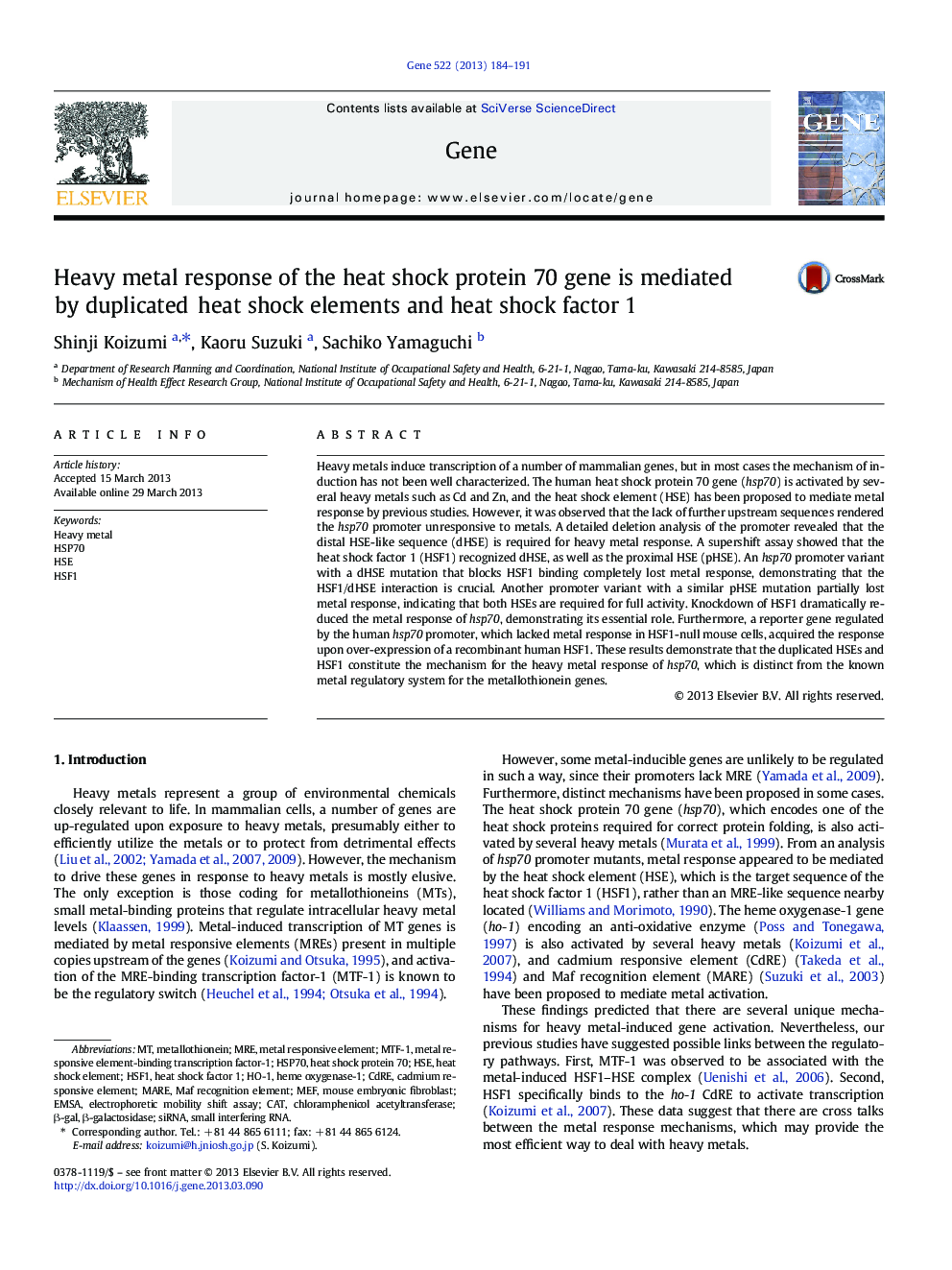| کد مقاله | کد نشریه | سال انتشار | مقاله انگلیسی | نسخه تمام متن |
|---|---|---|---|---|
| 2817216 | 1159975 | 2013 | 8 صفحه PDF | دانلود رایگان |

• Components required for metal activation of the human HSP70 gene were identified.
• Duplicated heat shock elements and a transcription factor HSF1 play a central role.
• Function of the distal heat shock element was particularly important.
• A metal-regulatory mechanism distinct from that known for metallothioneins was shown.
Heavy metals induce transcription of a number of mammalian genes, but in most cases the mechanism of induction has not been well characterized. The human heat shock protein 70 gene (hsp70) is activated by several heavy metals such as Cd and Zn, and the heat shock element (HSE) has been proposed to mediate metal response by previous studies. However, it was observed that the lack of further upstream sequences rendered the hsp70 promoter unresponsive to metals. A detailed deletion analysis of the promoter revealed that the distal HSE-like sequence (dHSE) is required for heavy metal response. A supershift assay showed that the heat shock factor 1 (HSF1) recognized dHSE, as well as the proximal HSE (pHSE). An hsp70 promoter variant with a dHSE mutation that blocks HSF1 binding completely lost metal response, demonstrating that the HSF1/dHSE interaction is crucial. Another promoter variant with a similar pHSE mutation partially lost metal response, indicating that both HSEs are required for full activity. Knockdown of HSF1 dramatically reduced the metal response of hsp70, demonstrating its essential role. Furthermore, a reporter gene regulated by the human hsp70 promoter, which lacked metal response in HSF1-null mouse cells, acquired the response upon over-expression of a recombinant human HSF1. These results demonstrate that the duplicated HSEs and HSF1 constitute the mechanism for the heavy metal response of hsp70, which is distinct from the known metal regulatory system for the metallothionein genes.
Journal: Gene - Volume 522, Issue 2, 15 June 2013, Pages 184–191